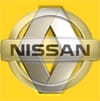While everything seemed to be going his way until now, Carlos Ghosn is facing his first difficulties today. The CEO of the Renault-Nissan group has to confront a double crisis. His recent proposal for an alliance with General Motors was rejected by the American giant while he was the promoter of the Franco-Japanese group.
To make matters worse, Renault’s registrations in France literally collapsed in the last quarter of 2006. Even though the diamond-brand firm had made extensive use, even abused, of large promotional campaigns. Lucrative discounts of up to 4500 euros were thus offered to customers.
In the end, it changed nothing. Over the whole of 2006, the French brand fell by nearly 10% in its domestic market. Beyond our borders, things hardly improved. The group’s fall reached 9.6% in the European Union.
This plunge in sales is explainable. Products with high innovation indices, traditionally the preserve of the diamond-brand company, no longer appeal to buyers. The brand’s large MPV, the Espace, sees its market share eroding under the onslaught of trendy 4x4s. Its small MPV Modus is a failure. Its high selling price and internal competition with the Clio III have limited its distribution. The Scénic, Renault’s golden goose, is beginning to show its age. The upscale models are relegated to flag-carrying roles. The sector, dominated by German brands for decades, keeps their sales confidential.
The outlook is not promising. The launch of the Twingo II has just been postponed, and delays in marketing the 4×4 manufactured in Korea are accumulating. It looks to be a long time for Carlos Ghosn.
Nissan at a Standstill
The CEO appears to be directly involved in the current poor performance of the Japanese manufacturer. The ally of the Boulogne-Billancourt manufacturer saw its production decrease by 16.5% in 2006 in Japan, its main market. While at the same time, other manufacturers in the archipelago all experienced growth. Nissan also fell sharply in Europe (-16.2%) and the United States (-6.2%).
At the last Paris Motor Show in October, the Franco-Lebanese-Brazilian CEO announced an offensive by the Land of the Rising Sun manufacturer in terms of products, notably in the second half of the year. The problem is that the brand’s reputation for quality, once close to Toyota and Honda, tends to diminish. A recent satisfaction survey conducted by the highly respected German Automobile Club (ADAC) ranked Nissan last among Japanese manufacturers. By cutting corners on the quality of plastics, using too many components in common with Renault, and seeking cost savings at all costs, the Japanese brand reaps the fruits of its extreme cost reduction policy. Furthermore, certain stylistic choices, like for the American minivan Quest, have been widely contested. Including internally.
The year 2007 is shaping up to be crucial for the Franco-Japanese group in an automotive sector facing multiple difficulties. The State has expressed concern and recently unlocked some 400 million euros to help the sector. This will probably not be enough, and Renault, to reverse the trend, will absolutely need to accelerate the rejuvenation of its range. At the same time, its partner would do well to rethink its strategy. To see the first effects of this restructuring, we will have to wait for the second semester. Mark your calendars.


